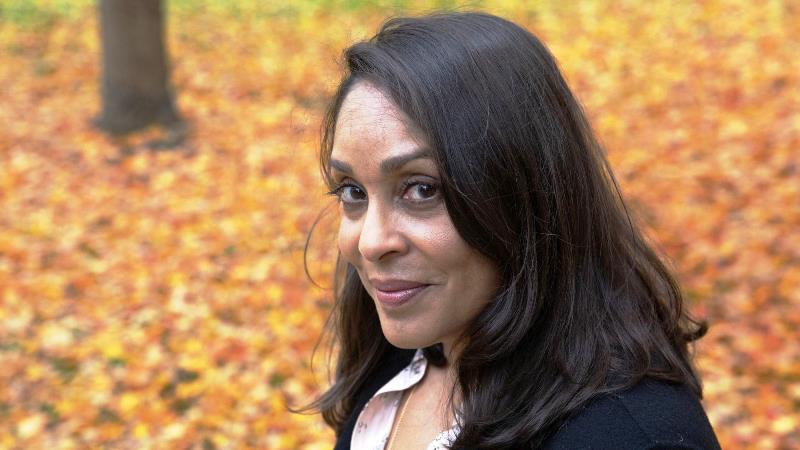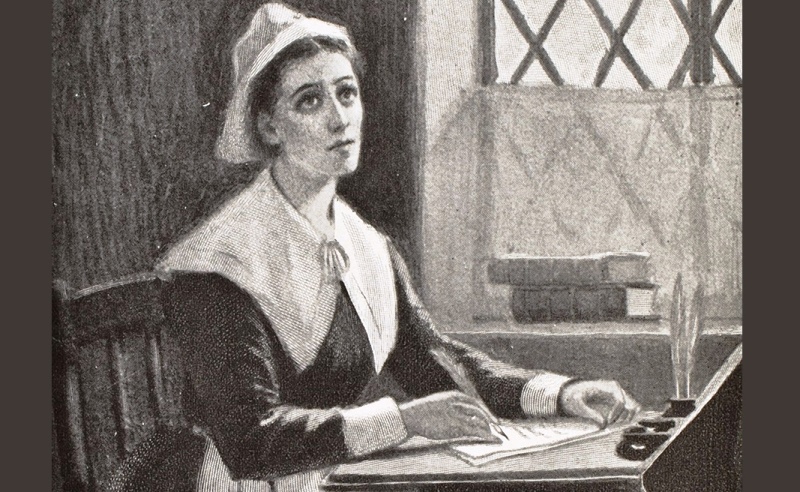Yes, we’ve all seen more moms go out and work, we’ve seen more women take the lead and achieve great things in great places, we’ve seen women leading hordes of men into success and fame, yet, women are still referred to as the “weaker sex.” Gender-based discrimination is still a thing. Crimes against women have only increased, while the world has proudly boasted of becoming more progressive with time. How do we rationalize this cultural war that is constantly waging against women? How do women deal with this discrimination on a day to day basis, and how do we know of so many powerful women in history who have managed to make a name for themselves, despite this discrimination being legal during their time?
Suggested read: Women In Leadership Roles Who Have Carved A Niche For Themselves
The Achievement of Women Throughout History
The world we see today is not the same world that women existed in, even a hundred years ago. Throughout history, women have been subjected to misogynistic exclusion from all things related to public life, because they were considered the “weaker sex,” the weak links in the progress of the world, only required when it comes to matters of procreation.

Image source: Google, copyright-free image, under Creative Commons License
They were disallowed from participating in public life and political life, unable to make the decisions at home and never allowed to outshine their male counterparts. Despite all these hardships and social barriers, we have a number of women who have achieved momentous things, and have made a name for themselves. We have all heard of women like Amelia Earhart, Mari Curie, Jane Austen, Rosa Parks, Mary Wollstonecraft, Frida Kahlo, Valentina Tereshkova and countless others who have all achieved greatness in their own field of work. How did they do this? How did they manage to create an unchallenged niche for themselves in a world which was characterized by patriarchal bullying?
Eleanor Roosevelt had said, “Do one thing every day that scares you.”
This is the foundation of every single thing that powerful women in history and womankind in general have achieved in the past. Even before the First Wave of feminism broke out in the 19th century, women had started to make their way into public life, through sheer grit and determination. For centuries before the Suffragette movement, women had been subjected to discrimination because of theological misogyny, which essentially equated the entire female species with the Fall of Eve, and collated them with immorality, weakness and dependence. Because of this, women like Joan of Arc and others had to assume masculine identities in order to achieve anything, or even step out into the public sphere. After the Renaissance however, women started to make a name for themselves, with their own identities intact and began to foray into the world of science, politics, philosophy and literature.

Image source: Google, copyright-free image, under Creative Commons License
When one thinks of the circumstances under which powerful women in history achieved what they did, it puts things into perspective for women today, who are still struggling to find their voice and eradicate gender discrimination. The Second and Third Wave of feminism forayed into more deep-rooted women’s issues like their place in a larger culture, their sexuality and freedom of expression, after the First Wave managed to get them property rights and the right to vote. The Feminist Movement was the first instance of women coming out together and demanding equal participation for themselves in society, on the same level as men. Taking inspiration from the countless women who defied all odds and made themselves immortal and forever relevant, all women found the strength and courage required for the progress of their kind as one.
The condition of women today
You would think that after all that struggle, after that many legislative changes that were implemented and that many movements which spoke about the importance and role of women in public life, women would reach unprecedented heights today. They would stand at par with men in all things, whether it is in home or in Parliament. They would achieve things without hindrance or discrimination, on the basis of their gender. Let us look at how far we have come when it comes to treating women in terms of their ambitions and achievements.
According to the 2014 OECD Forum on Women’s Leadership in Public Life
Women’s access to public leadership positions, whether in politics, the legal profession, the private sector or academia, remains elusive across the world. Women comprise only one in five parliamentarians and just 27% of judges worldwide. A mere 22% per cent of senior managers in economic and strategic positions in the European Union’s public sector are women.
This makes us question why women are still substantially underrepresented in roles that require decision-making. Though the participation of women has increased in the labor force, and statistics support the argument that more women are being engaged in the public sector, it is astonishing how underrepresented they are higher up the corporate hierarchy. The question that follows is what changes need to be made to empower women so that they can be front-runners in public life?

Image source: Google, copyright-free image, under Creative Commons License
Emboldening women while leveraging their aptitude, skills, and leadership ability in not only the business sector, but also politics and society in general, is necessary if a nation wants to maximize its efficiency. This is because, only when the leadership is diverse can a country come up with more innovative solutions. It goes without saying that this participation also confirms and nurtures a growth that is inclusive.
Representation of Women in Politics
According to research, countries, where there is a greater share of women in legislatures, have a lower level of inequality. Additionally, having women cabinet ministers and faith in the national governments, has been seen to improve the public health expenditure across most countries.
Women ministers can be expected to bring to the forefront issues that need immediate attention, such as gender-based violence and inequality. They are likely to introduce and encourage policies that are family-friendly. According to statistics, legislatures that have a good representation of the female population are more responsive to the needs of the citizen.

Image source: Instagram
When decision-making bodies serve as a proper reflection of the diverse groups of people they represent, only then can you anticipate balanced rules and policies to be designed and implemented. This, in turn, ensures a comprehensive approach to both policy making as well as delivery of services.
Nonetheless, what is upsetting is that despite improvement in participation of women in education, and proper representation of them in the public sector, women’s access to opportunities to make it to the higher rungs is still a major challenge. Moreover, the equal treatment of women in public life is, even as of today, a myth.
Suggested read: 11 Famous Women Inventors And Their Marvelous Inventions
Representation of women in the public sector
Let us have a look at the situation in the public sector. Most women are concentrated in the lower pay occupations and the lower grade jobs. Across the OECD countries, for instance, women occupy 65 per cent of secretarial positions in the central government. Due to family care responsibilities back home, women are more likely than their male counterpart to work part-time jobs or sign up for temporary contracts.
Less than one per cent of the women in part-time jobs are in top management positions. Therefore, to convert these part-time jobs to full-time, there is a need to ensure the family care responsibilities are divided equally between both the parents. There is also a need to reduce the obvious pay gapbased on gender,which contributes to women leaving their jobs after marriage as they are the one who earn lesser than their spouses, in most cases, and therefore, need to be the one who sacrifices.
How to increase women’s access to powerful positions?
The barriers (structural, legal and social) to women’s empowerment in the public sector is visible in the form of discrimination while hiring, mechanisms of promotion and transfers, impediments to women’s choice of career, challenges to achieve work-life balance etc. need to be removed, but how? All this is just a reflection of the deep-rooted stereotypical attitude toward women which has not gone anywhere despite the feminist movement or the struggle for women’s rights.

Image source: Google, copyright-free image, under Creative Commons License
A number of countries are taking steps in the right direction, however. They are trying to increase diversity by introducing equality laws, targets and quotas. They are encouraging development programs and trainings to make women as employable as the men. They are also pushing for family-friendly policies, and putting efforts to make flexible working arrangements.
The work-shadowing schemes are attempting to increase women’s application to decision-making posts. Special transitional quotas are bringing in skilled women to top positions. There has also been a focus to changing the corporate culture, while addressing the legal barriers women face to become judges.
There is a need for merit-based promotion and a career path based on portfolios. Sterner moves like supporting national law associations and imposing budget reductions if diversity targets are not met, can also help.
However, all this will achieve nothing if the stereotypes are not addressed, and men are not involved in the fight for women’s equality.
A few steps that can go a long way to break gender stereotypes include, addressing the discrimination in the distribution of unpaid work; bringing changes to laws and policies that are unfair to women; setting up mechanisms that will help women achieve work-life balance; creating awareness about the fact that gender stereotypes sway gender relations, which is harmful for both men and women. When a married woman is circumstantially forced to leave her job, the entire financial responsibility falls on the man. And therefore, it is necessary to involve the men in this fight for equality.

Image source: Google, copyright-free image, under Creative Commons License
Media also needs to play a critical role in revealing the stereotypes, and consequently, breaking them. The whole idea of breaking the sexes down into pinks and blues, objectifying women, showing them in exaggerated domestic roles and misrepresentation of women, can be hugely debilitating for Feminism in general. The way the media treats women affects the way that an entire generation perceives them, especially because we are living and thriving in a digital age, where one hash tag has the power to change the world. Something as simple as the absence of enough female role models and female achievers can shape the mindset of the people, and catapult them back to an age where women were practically invisible, and were considered good for nothing.
Even though the world has evolved enough to deem misogyny as “uncool,” internalized misogyny is still a prevalent problem which is affecting women everywhere. They are subjected to passive aggressive treatment by society and the media, and even though they are still doing great things, they aren’t given as much credit for their work as men. A glaring example of this is the wage gap that exists in almost all countries in the world.
What is required is to shift the discourse to the achievement of women, so that we breed a generation of better thinkers, for whom the gender divide is an abstraction. It is important to remember those who achieved much more with access to much less, and find the strength and courage to demand what women rightly deserve- enough credit. It is important to teach children that your genitals have nothing to do with your potential, and rectify the fact that just because you are a woman, your options are limited.
Suggested read: How To Have More Women Leaders? By Starting Early!
Despite the evolving nature of the perception of women, there are still deep-rooted problems in society and in the mindset of people which is preventing us from performing to our full potential. Despite the countless social movements and the general shift towards a more progressive thinking of gender equations in society, the world has not reached a stage where a woman is celebrated as loudly and as widely as a man is.
There are still terms and conditions imposed upon the freedom of women by patriarchy. We think it is time for a new wave of feminism which deals with even subtler forms of oppression that women have to face, so that we can covet each and every contribution that women make to this world as they should be coveted- with respect, dignity, attention and authority.
Featured image source: Google, copyright-free image, under Creative Commons License













